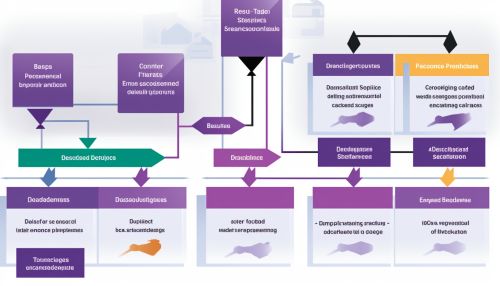Benchmarking
Introduction
Benchmarking is a systematic process of comparing an organization's performance to industry standards or best practices from other industries. Dimensions typically measured are quality, time, and cost. Benchmarking is used to measure performance using a specific indicator (cost per unit of measure, productivity per unit of measure, cycle time of x per unit of measure, or defects per unit of measure) resulting in a metric of performance that is then compared to others.
History and Development
The concept of benchmarking originated in the field of total quality management. It was first utilized by Xerox Corporation in the 1970s as a method to improve their operating procedures. Xerox identified their Japanese competitors as their benchmark and initiated a study to understand the reasons behind their superior performance. This process of learning, adapting, and improving their own procedures based on the best practices of others is what is now known as benchmarking.


Types of Benchmarking
There are several types of benchmarking, each with a different focus and set of methodologies. These include:
Process Benchmarking
Process benchmarking involves comparing an organization's processes with those of other similar organizations, often within the same industry. This type of benchmarking looks at how other organizations achieve their high performance levels and uses this information to improve the benchmarking organization's own processes.
Performance Benchmarking
Performance benchmarking involves comparing the levels of performance in producing products and services. This type of benchmarking often involves the use of performance metrics to compare the different levels of performance between different organizations.
Strategic Benchmarking
Strategic benchmarking involves looking at how other organizations compete in the same industry. This type of benchmarking looks at the strategies that high-performing organizations use to compete and uses this information to improve the benchmarking organization's own strategic planning.
Functional Benchmarking
Functional benchmarking involves comparing an organization's functional skills or processes with those of other organizations, often from different industries. This type of benchmarking looks at how other organizations perform the same functional tasks and uses this information to improve the benchmarking organization's own functional skills.
Benchmarking Process
The benchmarking process typically involves the following steps:
1. Identify the subject: The first step in the benchmarking process is to identify what is to be benchmarked—the function, process, or business unit.
2. Plan: The second step is to determine how the benchmarking will be conducted. This includes identifying the key performance metrics, choosing the organizations to be benchmarked, and establishing a benchmarking team.
3. Collect data: The third step involves collecting data on the performance metrics identified in the planning stage. This data can be collected through research, surveys, interviews, or site visits.
4. Analyze: The fourth step involves analyzing the collected data to identify gaps in performance, determine the causes of these gaps, and identify potential solutions.
5. Adapt and implement: The final step involves adapting the best practices identified through the benchmarking process and implementing these practices within the organization.
Benefits of Benchmarking
Benchmarking provides several benefits to organizations. It allows organizations to understand how they compare to others in their industry, identify areas for improvement, and develop plans for improving performance. Benchmarking can also help organizations identify industry trends, gain a better understanding of their customers' needs, and improve their overall competitiveness.
Limitations and Criticisms
Despite its benefits, benchmarking is not without its limitations and criticisms. Some critics argue that benchmarking can lead to a focus on short-term improvements at the expense of long-term strategy. Others argue that benchmarking can lead to a culture of imitation rather than innovation. Additionally, benchmarking can be a time-consuming and costly process, and the data collected may not always be directly comparable.
